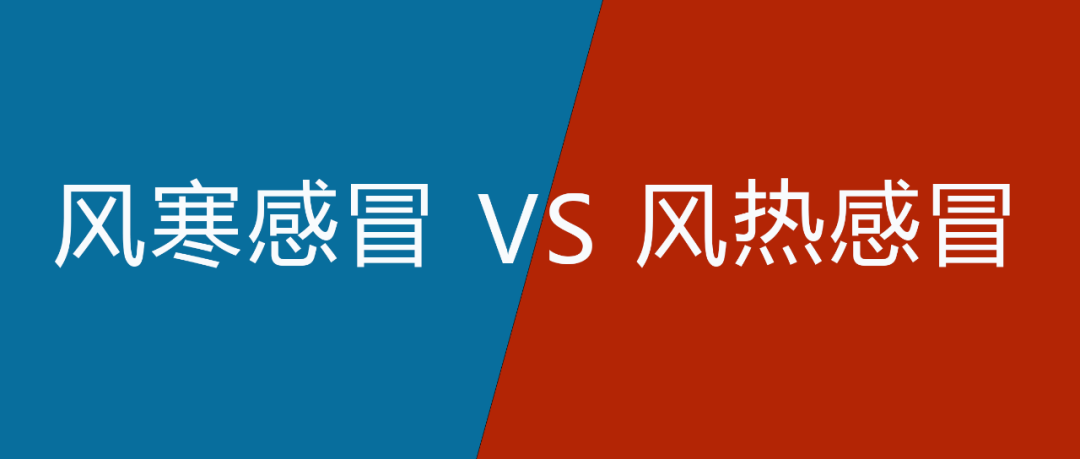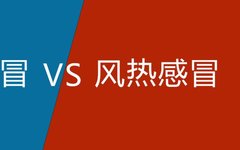Animal colds are a concept in Traditional Chinese Medicine (TCM), whereas Western medicine does not recognize colds as infectious diseases, referring instead to influenza and other viral diseases such as Newcastle disease, infectious bronchitis, and infectious laryngotracheitis. Since colds are classified as a disease in TCM, effective treatment requires the application of TCM differentiation theory and methods. TCM categorizes colds into two types: Wind-Heat colds and Wind-Cold colds. Many people struggle to differentiate between these two types of colds because they are unaware of the distinctions. A significant reason for the failure of many clinical veterinarians in treating colds with herbal medicine is their lack of understanding regarding the classification of colds and how to differentiate them in clinical practice.
Because TCM diagnosis requires both theoretical knowledge and practical experience, it is often challenging for non-professionals to distinguish between Wind-Heat colds and Wind-Cold colds. This can lead to blind medication choices and confusion between cold and heat syndromes. This explains why some individuals find herbal medicine very effective, while others not only fail to recover but may also experience completely opposite treatment outcomes. To enhance everyone’s accuracy and effectiveness in TCM differentiation and treatment of colds, let us explore how to distinguish between Wind-Cold and Wind-Heat colds in clinical practice and how to select appropriate medications for each type.

1. Symptom Differences Between Wind-Cold and Wind-Heat Colds
| Wind-Cold Cold | Wind-Heat Cold |
| No sweating | Has sweating |
| Mild fever, more sensitive to cold | Higher fever, slightly sensitive to wind |
| White tongue coating | Red and yellow tongue coating |
| Stuffy nose, clear nasal discharge | Stuffy nose, yellow nasal discharge |
| Coughing with white phlegm | Coughing with yellow phlegm |
| No thirst | Thirsty |
| Sore throat and dry throat | Significant throat pain |
2. Commonly Used Medications for Wind-Cold Colds
1. Ganmao Qingre Granules
【Ingredients】Jing Jie (Schizonepeta), Bo He (Peppermint), Fang Feng (Siler), Chai Hu (Bupleurum), Zi Su Ye (Perilla Leaf), Ge Gen (Kudzu Root), Jie Geng (Platycodon), Ku Xing Ren (Bitter Apricot Seed), Bai Zhi (Angelica Dahurica), Ku Di Ding (Bitter Herb), Lu Gen (Reed Rhizome).
【Functions and Indications】Disperse wind and scatter cold, relieve exterior and clear heat. Used for Wind-Cold colds with symptoms of headache, fever, chills, body aches, clear nasal discharge, and cough with dry throat.
2. Jing Fang Granules
【Ingredients】Jing Jie (Schizonepeta), Fang Feng (Siler), Qiang Huo (Notopterygium), Du Huo (Angelica Pubescens), Chai Hu (Bupleurum), Qian Hu (Peucedanum), Chuan Xiong (Ligusticum), Zhi Ke (Bitter Orange), Fu Ling (Poria), Jie Geng (Platycodon), Gan Cao (Licorice).
【Functions and Indications】Induce sweating and relieve exterior, disperse wind and eliminate dampness. Used for Wind-Cold colds with symptoms of headache, body aches, chills without sweating, stuffy nose with clear discharge, and cough with white phlegm.
3. Wind-Cold Cold Granules
【Ingredients】Ma Huang (Ephedra), Ge Gen (Kudzu Root), Gui Zhi (Cinnamon Twig), Fang Feng (Siler), Zi Su Ye (Perilla Leaf), Bai Zhi (Angelica Dahurica), Jie Geng (Platycodon), Ku Xing Ren (Bitter Apricot Seed), Chen Pi (Tangerine Peel), Gan Jiang (Dried Ginger), Gan Cao (Licorice).
【Functions and Indications】Relieve exterior and induce sweating, disperse wind and scatter cold. Used for Wind-Cold colds with symptoms of fever, headache, chills, no sweating, cough, stuffy nose, and clear nasal discharge.
4. Ganmao Soft Capsules
【Ingredients】Ma Huang (Ephedra), Gui Zhi (Cinnamon Twig), Jing Jie (Schizonepeta), Huang Qin (Scutellaria), Ku Xing Ren (Bitter Apricot Seed), Qiang Huo (Notopterygium), Chuan Xiong (Ligusticum), Fang Feng (Siler), Bai Zhi (Angelica Dahurica), Shi Chang Pu (Acorus), Ge Gen (Kudzu Root), Bo He (Peppermint), Dang Gui (Angelica Sinensis), Jie Geng (Platycodon).
【Functions and Indications】Disperse wind and relieve heat. Used for exterior Wind-Cold causing headache, fever, stuffy nose with discharge, chills without sweating, muscle aches, and sore throat.
5. Ganmao Shufeng Granules
【Ingredients】Ma Huang (Ephedra), Ku Xing Ren (Bitter Apricot Seed), Gui Zhi (Cinnamon Twig), Bai Shao (White Peony) (wine-fried), Zi Su Ye (Perilla Leaf), Fang Feng (Siler), Jie Geng (Platycodon), Gu Ya (Barley Sprout) (fried), Gan Cao (Licorice), Da Zao (Jujube), Sheng Jiang (Fresh Ginger), Du Huo (Angelica Pubescens).
【Functions and Indications】Warm and disperse exterior, regulate lung and middle. Used for Wind-Cold colds, fever, cough, headache, sensitivity to cold, clear nasal discharge, muscle aches, and fatigue in limbs.
6. Chuan Xiong Tea Adjusting Granules
【Ingredients】Chuan Xiong (Ligusticum), Bai Zhi (Angelica Dahurica), Qiang Huo (Notopterygium), Xi Xin (Asarum), Fang Feng (Siler), Bo He (Peppermint), Jing Jie (Schizonepeta), Gan Cao (Licorice).
【Functions and Indications】Disperse wind and relieve pain. Used for headaches due to wind invasion, or with chills, fever, and stuffy nose.
3. Commonly Used Medications for Wind-Heat Colds1. Xiao Chai Hu Granules【Ingredients】Chai Hu (Bupleurum), Jiang Ban Xia (Pinellia), Huang Qin (Scutellaria), Dang Shen (Codonopsis), Gan Cao (Licorice), Sheng Jiang (Fresh Ginger), Da Zao (Jujube)【Functions and Indications】Relieve exterior and disperse heat, soothe liver and stomach. Used for exterior pathogenic disease with Shaoyang syndrome, symptoms include alternating chills and fever, fullness in the chest and hypochondria, poor appetite, irritability, nausea, and bitter taste in the mouth with dry throat.2. Ban Lan Gen Granules【Ingredients】Ban Lan Gen (Isatis Root).【Functions and Indications】Clear heat and detoxify, cool blood and benefit the throat. Used for sore throat and dry mouth due to excess heat in the lung and stomach; effective for acute tonsillitis with the above symptoms.3. Compound Ganmao Ling Granules【Ingredients】Jin Yin Hua (Honeysuckle), Wu Zhi Guo (Five Finger Fruit), Ye Ju Hua (Wild Chrysanthemum), San Cha Ku (Three-pronged Bitter), Nan Ban Lan Gen (Southern Isatis Root), Gang Mei (Garcinia), Paracetamol, Chlorpheniramine Maleate, Caffeine.【Functions and Indications】Cool and disperse exterior, clear heat and detoxify. Used for Wind-Heat colds with symptoms of fever, slight aversion to wind and cold, body aches, dry mouth and thirst, nasal congestion with thick discharge, red and swollen sore throat, cough with thick yellow phlegm.4. Lianhua Qingwen Capsules【Ingredients】Lian Qiao (Forsythia), Jin Yin Hua (Honeysuckle), Zhi Ma Huang (Fried Ephedra), Chao Ku Xing Ren (Fried Bitter Apricot Seed), Shi Gao (Gypsum), Ban Lan Gen (Isatis Root), Mian Ma Guan Zhong (Lysimachia), Yu Xing Cao (Houttuynia), Guang Huo Xiang (Patchouli), Da Huang (Rhubarb), Hong Jing Tian (Rhodiola), Bo He (Peppermint).
【Functions and Indications】Clear epidemic toxins and detoxify, disperse lung heat. Used for treating influenza with heat toxin attacking the lung syndrome, symptoms include fever or high fever, chills, muscle aches, nasal congestion with discharge, cough, headache, dry throat, red tongue, and yellow or greasy coating.
5. Shuang Huang Lian Oral Liquid
【Ingredients】Jin Yin Hua (Honeysuckle), Huang Qin (Scutellaria), Lian Qiao (Forsythia).
【Functions and Indications】Disperse wind and relieve exterior, clear heat and detoxify. Used for colds caused by exterior Wind-Heat, symptoms include fever, cough, and sore throat.
Knowledge Planet
Veterinary Pharmacology Technical Exchange and Learning Space

Long press to recognize the QR code to join the Knowledge Planet

